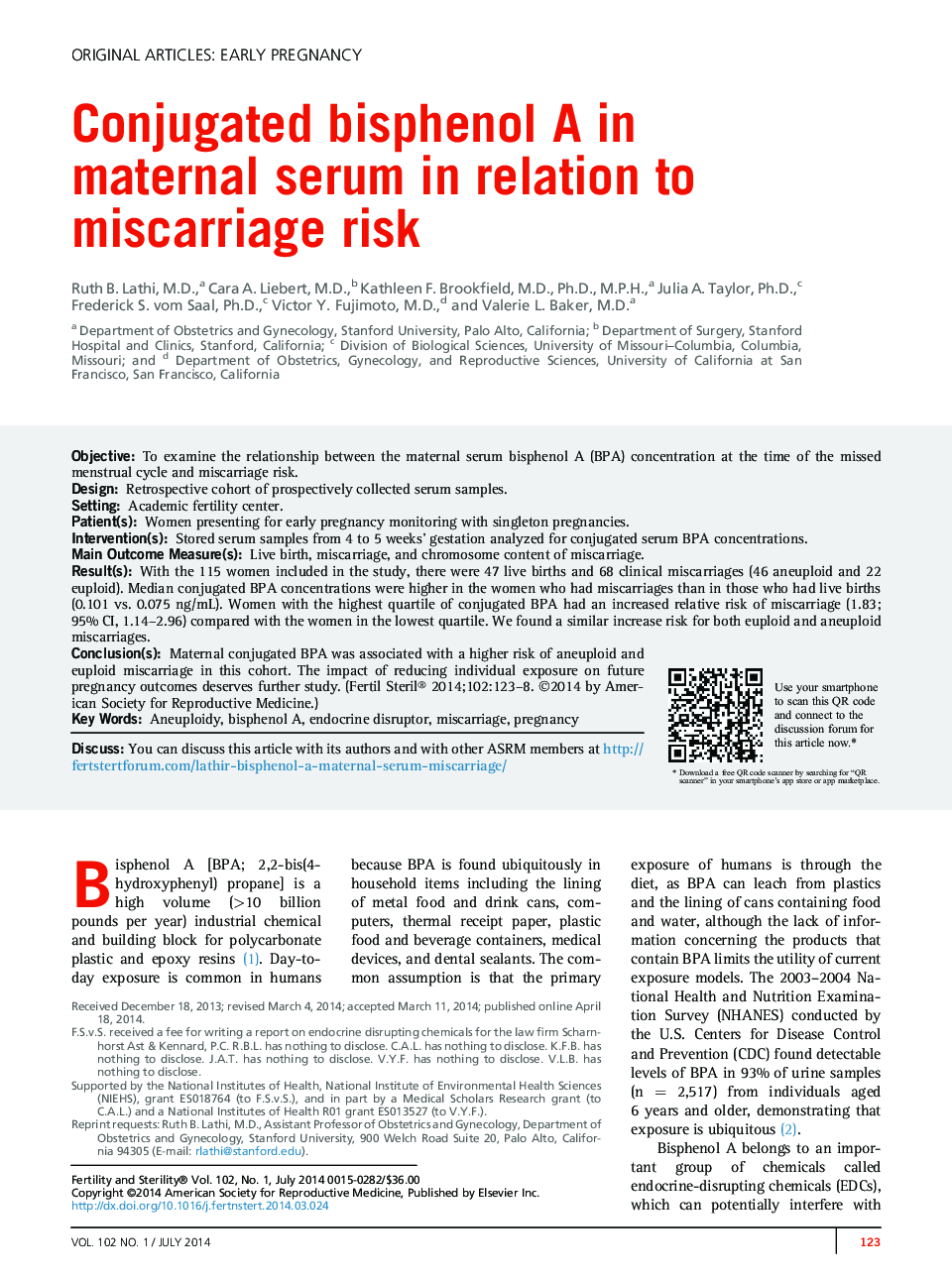| Article ID | Journal | Published Year | Pages | File Type |
|---|---|---|---|---|
| 6180182 | Fertility and Sterility | 2014 | 6 Pages |
ObjectiveTo examine the relationship between the maternal serum bisphenol A (BPA) concentration at the time of the missed menstrual cycle and miscarriage risk.DesignRetrospective cohort of prospectively collected serum samples.SettingAcademic fertility center.Patient(s)Women presenting for early pregnancy monitoring with singleton pregnancies.Intervention(s)Stored serum samples from 4 to 5Â weeks' gestation analyzed for conjugated serum BPA concentrations.Main Outcome Measure(s)Live birth, miscarriage, and chromosome content of miscarriage.Result(s)With the 115 women included in the study, there were 47 live births and 68 clinical miscarriages (46 aneuploid and 22 euploid). Median conjugated BPA concentrations were higher in the women who had miscarriages than in those who had live births (0.101 vs. 0.075Â ng/mL). Women with the highest quartile of conjugated BPA had an increased relative risk of miscarriage (1.83; 95% CI, 1.14-2.96) compared with the women in the lowest quartile. We found a similar increase risk for both euploid and aneuploid miscarriages.Conclusion(s)Maternal conjugated BPA was associated with a higher risk of aneuploid and euploid miscarriage in this cohort. The impact of reducing individual exposure on future pregnancy outcomes deserves further study.
